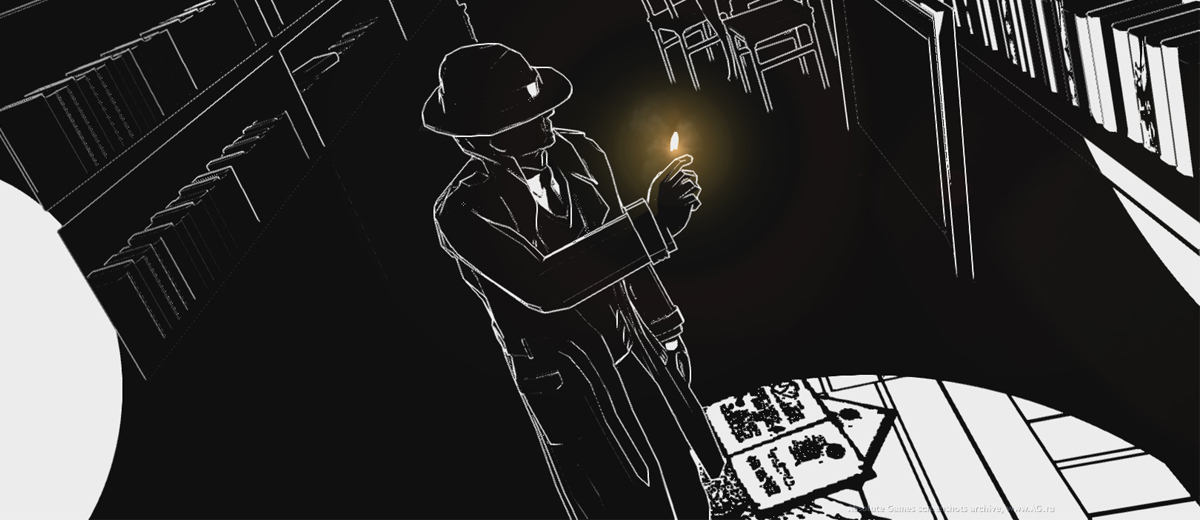
 White Night begins like any good horror story should. A dapper man crashes his car in the middle of the night in 1930s Boston. Not just for any reason, however. Rather, he’s seen a strange ghost of a woman and swerved out of the way to ensure he doesn’t hit her. Injured and with his car as a write off, he limps his way into a mysterious mansion. Adorned in strange insignia and seemingly abandoned, the man begins to question himself. Did he really hit that woman? Where is he? And more importantly – why can’t he leave the mansion after entering?
White Night begins like any good horror story should. A dapper man crashes his car in the middle of the night in 1930s Boston. Not just for any reason, however. Rather, he’s seen a strange ghost of a woman and swerved out of the way to ensure he doesn’t hit her. Injured and with his car as a write off, he limps his way into a mysterious mansion. Adorned in strange insignia and seemingly abandoned, the man begins to question himself. Did he really hit that woman? Where is he? And more importantly – why can’t he leave the mansion after entering?
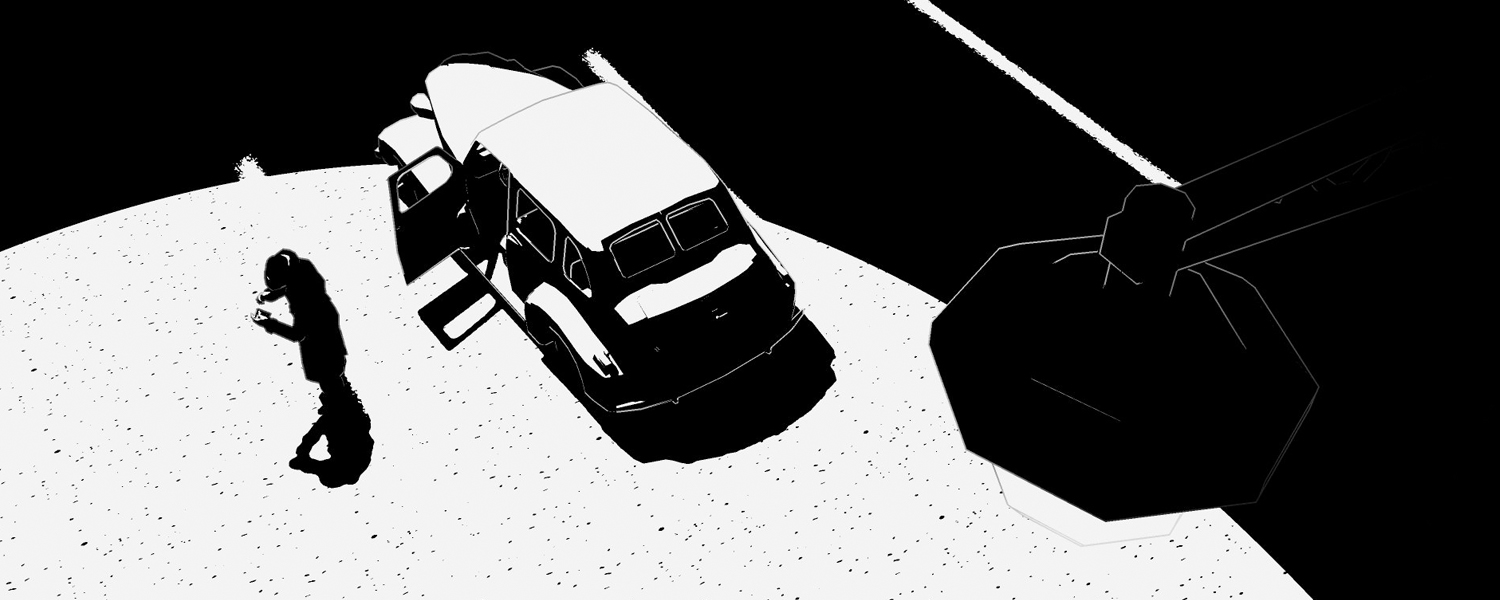 White Nights tone and atmosphere is best described as unnerving and unnatural. The game wears its Hitchockian influence on its sleeve, ratcheting up the tension and mystery with every second. But while the mystery is bound to keep most players wanting more, the ultimate outcome is unfortunately quite predictable. Mind you, if you’re not too well versed in the tropes and outcomes of most classical horror films (or even games) then you might not see the resolution coming. Regardless, White Night is an intriguing and enjoyable story from beginning to just before the end.
White Nights tone and atmosphere is best described as unnerving and unnatural. The game wears its Hitchockian influence on its sleeve, ratcheting up the tension and mystery with every second. But while the mystery is bound to keep most players wanting more, the ultimate outcome is unfortunately quite predictable. Mind you, if you’re not too well versed in the tropes and outcomes of most classical horror films (or even games) then you might not see the resolution coming. Regardless, White Night is an intriguing and enjoyable story from beginning to just before the end.
 Easily the most obvious and striking thing about White Light is its presentation. Similar to 2009’s MadWorld, White Night employs extremely stylised visuals combining high contrast black and white colours with tinges of colour to signify light in some circumstances. This look is unique and definitely eye catching, but doesn’t look all that great in screenshots. In motion, it works surprisingly well with the dynamics of this art style being utilised uniquely to help reveal to or hide things from the player as they explore the decrepit mansion.
Easily the most obvious and striking thing about White Light is its presentation. Similar to 2009’s MadWorld, White Night employs extremely stylised visuals combining high contrast black and white colours with tinges of colour to signify light in some circumstances. This look is unique and definitely eye catching, but doesn’t look all that great in screenshots. In motion, it works surprisingly well with the dynamics of this art style being utilised uniquely to help reveal to or hide things from the player as they explore the decrepit mansion.
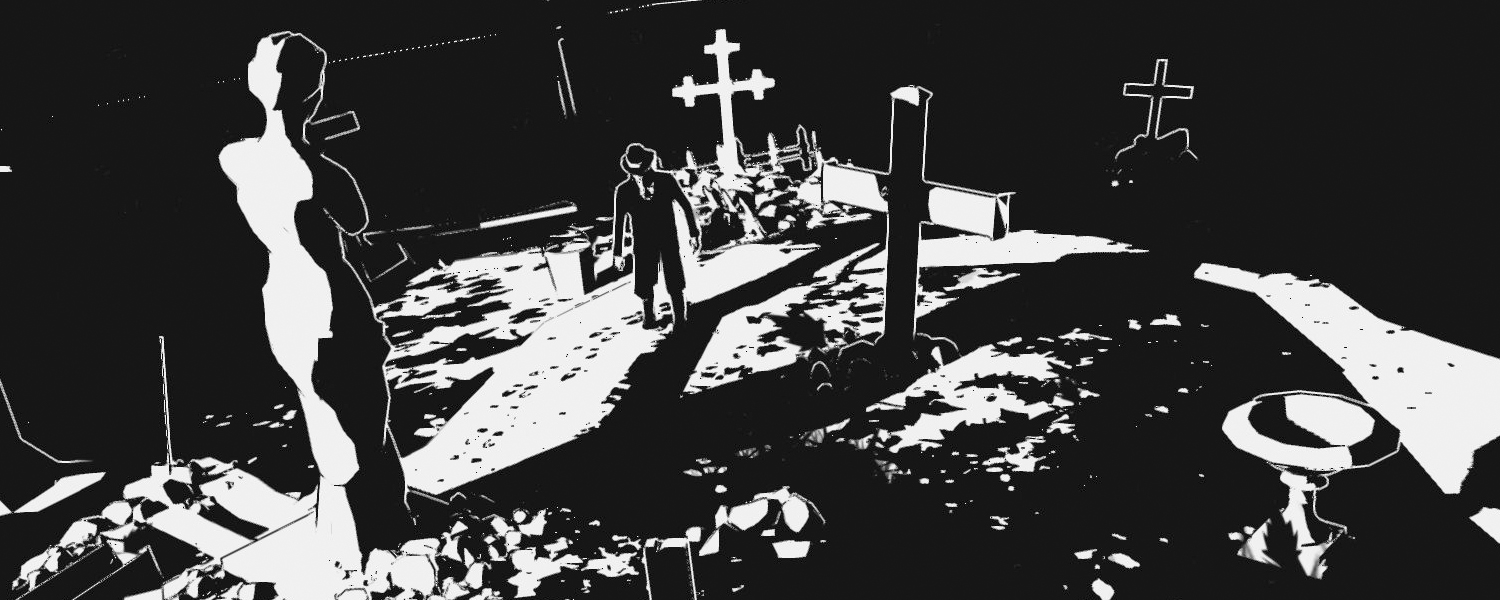 Thankfully, while the game is largely in black and white, it still feels varied and alive enough to look interesting from beginning to end. You’ll explore all kinds of strange rooms and surrounding locales on your journey through the mansion, and even come across eerie photographs of its prior residents. The game also makes full use of its fixed camera angles in typical survival horror fashion, surprising players at every twist and turn. And even better, the game (for the most part) runs at a fluid framerate of 60 frames per second too.
Thankfully, while the game is largely in black and white, it still feels varied and alive enough to look interesting from beginning to end. You’ll explore all kinds of strange rooms and surrounding locales on your journey through the mansion, and even come across eerie photographs of its prior residents. The game also makes full use of its fixed camera angles in typical survival horror fashion, surprising players at every twist and turn. And even better, the game (for the most part) runs at a fluid framerate of 60 frames per second too.
 White Night plays like any typical horror game – taking very liberal inspiration from both Resident Evil and especially the earlier Alone In The Dark games. Players explore the mansion collecting items and solving puzzles while also finding files that shed light on the history of the mansion and some of it’s prior residents. The game is split into chapters, but still feels open enough to scratch that “classic” horror itch similar to games like Resident Evil. The design of the mansion and it’s outskirts in White Night might not be as intricate or as well thought out as its predecessors but it definitely helps to get the job done.
White Night plays like any typical horror game – taking very liberal inspiration from both Resident Evil and especially the earlier Alone In The Dark games. Players explore the mansion collecting items and solving puzzles while also finding files that shed light on the history of the mansion and some of it’s prior residents. The game is split into chapters, but still feels open enough to scratch that “classic” horror itch similar to games like Resident Evil. The design of the mansion and it’s outskirts in White Night might not be as intricate or as well thought out as its predecessors but it definitely helps to get the job done.
The big difference between White Night and other games is the way that it utilises light. Most of the mansion is dark, so the only way to examine anything is to illuminate the place. This can be done with light switches and lamps mainly, but when they’re not working (and trust us, it happens a lot) you’ll have to rely on matches. Matches last for a certain amount of time and are limited, so they’re the major (and only) resource that you’ll manage throughout the game.
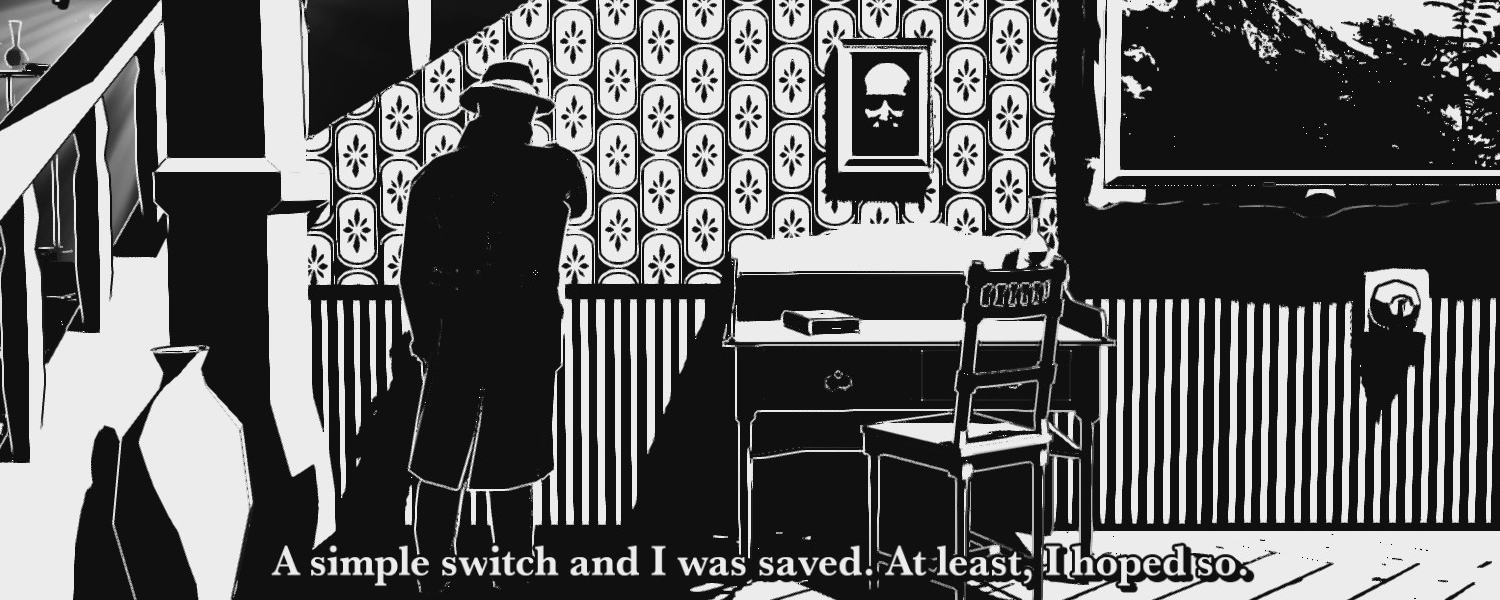 This works well in some circumstances but also introduces a few issues in some gameplay circumstances. Suppose you’re stuck wondering around a certain area of the mansion with no idea of what to do next. There’s enemies floating around the rooms you’re travelling between and there’s only one light between them. Your safe zone is the light, but the items you need to interact with are in the dark – which can’t be done without a match or something. But you’ve wasted your matches wandering around the place trying to solve your predicament. It’s a rare occasion, and later on in the game it’s incredibly hard to lose yourself into a corner like this, but it’s still possible especially in the early hours of the game.
This works well in some circumstances but also introduces a few issues in some gameplay circumstances. Suppose you’re stuck wondering around a certain area of the mansion with no idea of what to do next. There’s enemies floating around the rooms you’re travelling between and there’s only one light between them. Your safe zone is the light, but the items you need to interact with are in the dark – which can’t be done without a match or something. But you’ve wasted your matches wandering around the place trying to solve your predicament. It’s a rare occasion, and later on in the game it’s incredibly hard to lose yourself into a corner like this, but it’s still possible especially in the early hours of the game.
I mentioned enemies prior and they’re easily the worst aspect of White Night. The enemies are weak against light but conveniently are only weak against electric light – so moonlight and the light from matches won’t harm them. It becomes an interesting game of cat and mouse when you’re found with one and you’re trying to lure them into a dark area before slamming a light switch, but the way the enemies are handled in general isn’t particularly fun.
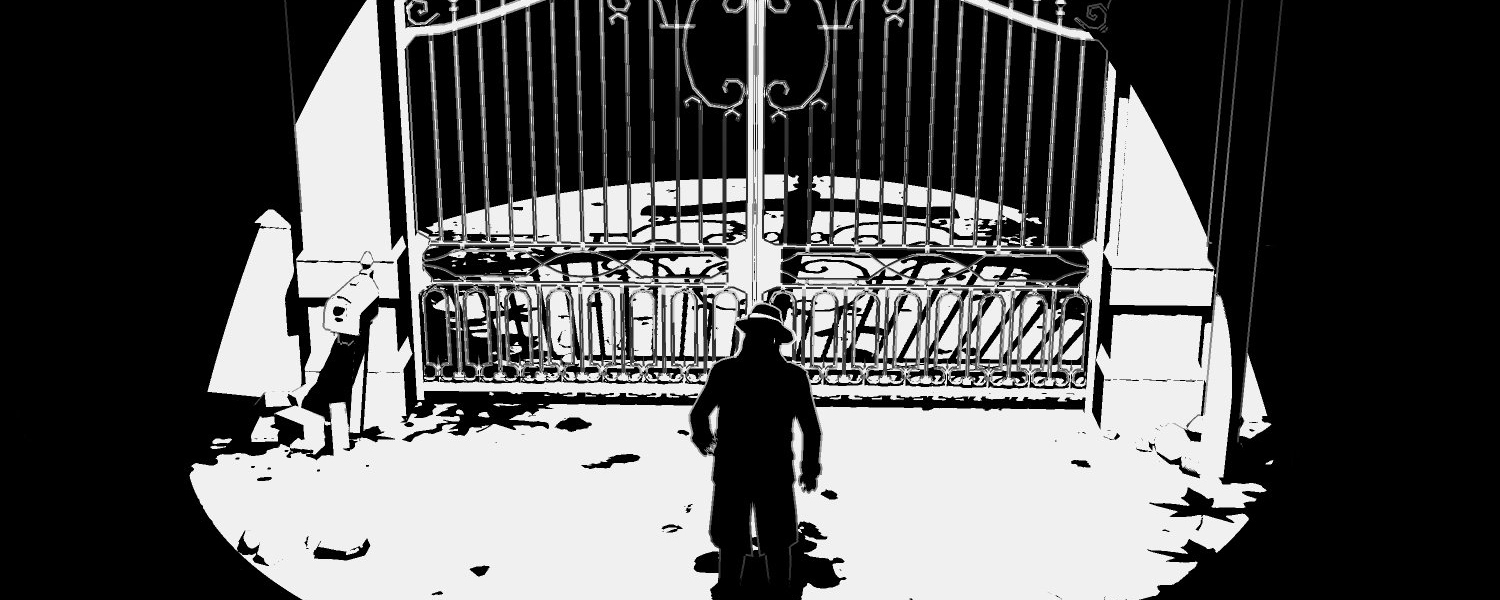 Sometimes they’ll just appear out of nowhere, sometimes they’ll block off areas you’re not meant to access yet. But if they even touch you, you’ll die. And you’ll have to go back to your last save point, which might be hours ago. This sounds like something I might be complaining about needlessly but I’d surmise that about 80% of my deaths in White Night could’ve been prevented if it weren’t for weird controls or ambiguous “hit” detection from these enemies. It’s a small issue but one worth mentioning.
Sometimes they’ll just appear out of nowhere, sometimes they’ll block off areas you’re not meant to access yet. But if they even touch you, you’ll die. And you’ll have to go back to your last save point, which might be hours ago. This sounds like something I might be complaining about needlessly but I’d surmise that about 80% of my deaths in White Night could’ve been prevented if it weren’t for weird controls or ambiguous “hit” detection from these enemies. It’s a small issue but one worth mentioning.
But the most important question for a game of this type remains unanswered – is it a scary game? In some aspects, White Night realises a great sense of tension extremely well. When your character’s match goes out, the controller begins to vibrate with an increasing intensity (presumably as something in the dark approaches you). It’s such an effective and simple way to elicit fear that I’ve always been too chicken to let the event plays out to see what happens. There are some cheap jump scares here and there (which still always admittedly made me jump) but overall the game does a great job at building tension.
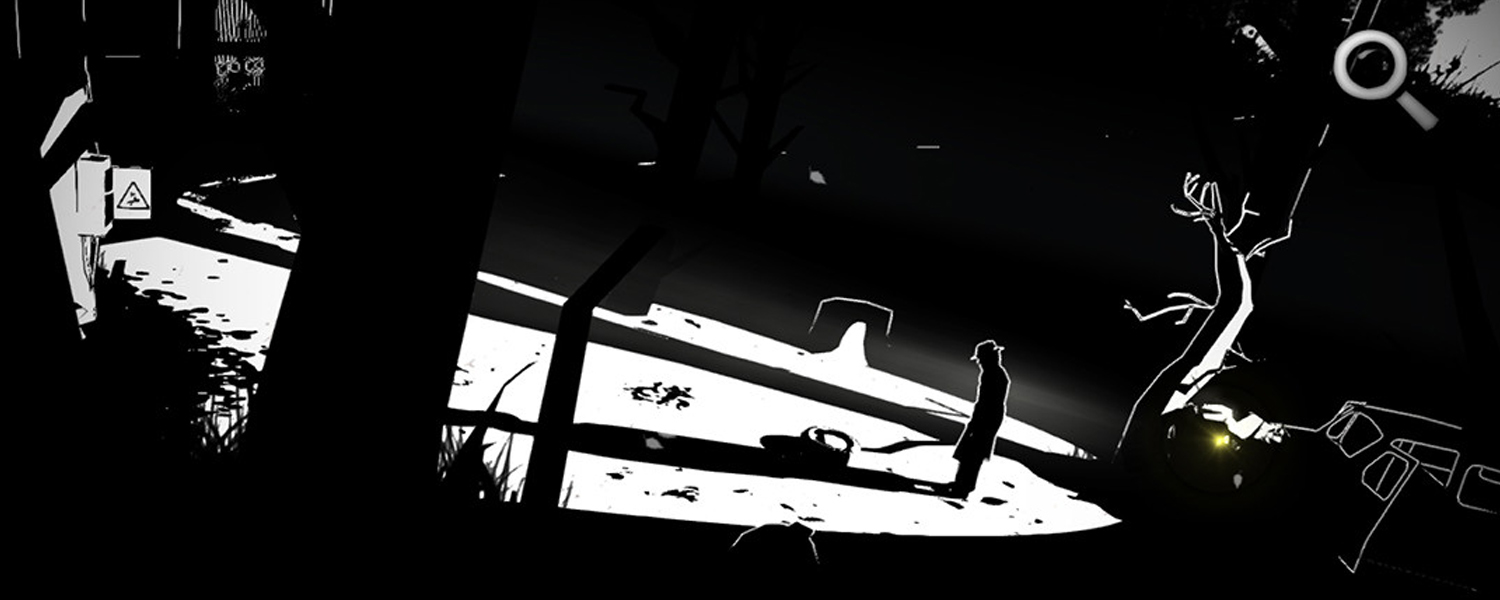 The only major nitpick that I would have with White Night is how the game is incredibly over-reliant on files to help build the game’s world. There’s at least fifty different files to find throughout the world of White Night and while It’s fun to get yourself immersed in the lore of the world, the over-reliance on these files makes it have almost an opposite effect. This is something that totally seems like a subjective nitpick, but something that is worth mentioning. Of course, they’re completely optional too, but you do feel like you’re missing out if you don’t attempt to read all of them.
The only major nitpick that I would have with White Night is how the game is incredibly over-reliant on files to help build the game’s world. There’s at least fifty different files to find throughout the world of White Night and while It’s fun to get yourself immersed in the lore of the world, the over-reliance on these files makes it have almost an opposite effect. This is something that totally seems like a subjective nitpick, but something that is worth mentioning. Of course, they’re completely optional too, but you do feel like you’re missing out if you don’t attempt to read all of them.
But even if you don’t, White Night is a pretty substantial romp. Most players will finish it anywhere between five to nine hours depending on how much you explore, so considering the asking price White Night represents excellent value for money.


